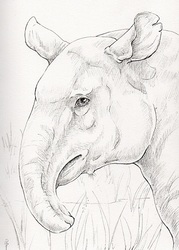Sign In
CloseToday's spirit guide is Heron! Be observant to what is going on around you. This may include working on having more patience in learning lessons or for opportunities to arise. However, while poised and waiting, remember to strike quick when necessary. Do not waste energy or resources, but call on Heron for the precision to move quick and gracefully. If you have been feeling down, Heron can teach you how to build your sense of pride and self-confidence through humble dignity. Follow Heron when searching for knowledge. The Heron spirit guide is known for it's connections to good luck, intelligence, patience, precision, resourcefulness, and grace. Heron can come as a reminder to hold compassion and determination within. Allow Heron to teach you the way to move gracefully through transitions and how to be comfortable in uncertain places. They have an ability to aid in working between realms symbolized by their habit of standing with one foot in the water and one on land. We can use this to aid in looking within to find our greatest challenges and defeat them. In Greek culture, Herons were seen as messengers to Gods such as Aphrodite and Athene. In Egyptian and Eastern cultures, the white heron was seen as a representation of the sun. People who connect with Heron are efficient with an ability to aid others in learning time management. These individuals are often graceful and patient, but they must sometimes learn that clumsiness or mistakes are not a sign of weakness. At times they may be shy in crowds or have had a difficult portion in their lives, but just need to learn how to balance their emotions and habits.
Herons, Ardeidae, are carnivorous birds that can live up to 20 years in the wild. There are 64 species of Heron with some of these species being called Egrets or Bitterns. Often, the term Egrets is used for species which are primarily white or possess decorative feathers. These large birds are long-legged birds who prefer habitats with access to large amounts of water such as wetlands or close to rivers, lakes, and ponds. Herons are found throughout Europe and North America as well as balmy climates throughout Asia, Australia, and Africa. The smallest species of Heron is the Green Heron which grows to approximately 18 inches long, weigh just over 8 oz, and has a wingspan of around 26 inches. They are darkly colored, stocky birds found throughout Central America and Mexico. The largest Heron species is the Great Blue Heron which grows to over 50 inches in length, weighs over 50 lbs, and possess a wingspan over 6.5 ft. Shown in the illustration above, Great Blue Herons can be found throughout coastal and wetland regions of North America, Central America, the Caribbean, and the Galapagos Islands. Herons will use their long legs to wade through water in search of prey. A specialized vertebrate in their neck allows them to strike quickly at their targets with their large, pointed beaks. The diet of a Heron consists of primarily fish, but they will also consume insects, snakes, small mammals or birds, amphibians, and mollusks. Some species will prefer a certain form of food such as the Yellow-crowned night heron which eats primarily crustaceans such as crabs. When hunting, they will gently sway their heads from side to side to calculate the exact position of their prey through the refraction of the water. Other species of Heron will even use bait to lure fish such as the Grey Heron and Little Egret. Some herons will even use man-made bait such as bread or drop seeds, flowers, or insects into the water. When reproduction occurs, it depends highly on the species. Certain Heron will are solitary nesters while others will group together in colonies to breed and nest. Often, Heron will build their nests in trees within woodlands close to water. Courtship begins when the male Heron will begin building the nest to attract females. They will puff their feathers and swell their neck while posturing. Afterwards, the female will aid in finishing the nest. The female will lay approximately 4 eggs which are incubated by both parents. After hatching, both parents will continue to care and feed the young until they develop fully.
Submission Information
- Views:
- 418
- Comments:
- 0
- Favorites:
- 3
- Rating:
- General
- Category:
- Visual / Traditional




